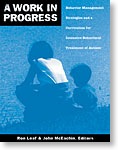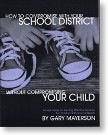Autism and the Role of Music: Part Two
09/09/11 18:25
Now that you’ve mastered the strategy discussed in Autism and the Role of Music, we can now talk about the next steps. Note that the pre-requisite to the following suggestions is that the child enjoys music; otherwise, you are wasting your child’s precious time and may be deploying resources in an inefficient manner.
 After you’ve found
After you’ve found  the perfect piano teacher and taught your child the basic skills, he or she should be reading music and on the way to becoming an amateur pianist. Get ready for the next step: it is time to introduce a band instrument. That’s right... a band instrument.
the perfect piano teacher and taught your child the basic skills, he or she should be reading music and on the way to becoming an amateur pianist. Get ready for the next step: it is time to introduce a band instrument. That’s right... a band instrument.
By sixth grade, most schools offer beginning band. If you can pre-teach the basics of an instrument the year before introductory band is available, then your child enters band considerably advanced relative to his or her peers and can probably learn with the rest of the class without having to be pulled out. Band classes typically progress very slowly. Since you’ve spent the last couple of years using the piano to teach rhythm, dynamics (e.g., louder, softer) and reading music, why change or add an instrument? It’s simple: piano is not typically part of a sixth grade band, particularly if it is a marching band! Although one can adapt the band for piano, I would not recommend it. That’s not a fight worth fighting.
Which instrument to choose? Alto saxophone or clarinet are the two best choices for several reasons; both instruments are generally played in a group of musicians playing the same instrument. There is rarely only one alto saxophonist or clarinetist in a band. In addition, reading the music is easy because the notes are only on one line rather than two (unlike piano in which the treble and bass clefs must be read concurrently). Since your child can already read music for the piano, reading music for a saxophone or clarinet will be considerably easier. An added benefit when it comes to autism is that when playing, both child’s hands and his or her mouth are engaged; therefore, there is less temptation to engage in self-stimulatory behavior. The saxophone and clarinet allow the child to join both a marching band and a stationary band. If you choose the saxophone, concert band and jazz band will be open to your child in high school; if you choose the clarinet, concert band and orchestra are opportunities open to your child in high school. You’ll be happy to know that sound is not extremely difficult to produce from either of these instruments. Therefore, the learning curve is not inordinately steep.
Once your child is competent playing a band instrument, you’ve achieved the following goals: first, you’ve found a great peer group for your child. Generally speaking, the nice children gravitate to music. Second, you’ve established a wonderful, structured mainstreaming venue throughout the high school years. In addition, you’ve created an appropriate leisure activity that will last a lifetime. You’ve also manufactured a valued role for your child during the holidays since you can teach the child a holiday repertoire that will be requested year after year by a variety of people (i.e., family, friends, religious institutions). Finally, you’ve created opportunities that may lead to a possible career.
So... what are you waiting for?
For your enjoyment and inspiration, here are recordings of a child with autism performing at variety of ages:
Song: Rustles of Spring
Age: 14 years old
Song: Rialto Ripples
Age: 15 years old
Song: Polka Dots and Moonbeams
Age: 17 years old


By sixth grade, most schools offer beginning band. If you can pre-teach the basics of an instrument the year before introductory band is available, then your child enters band considerably advanced relative to his or her peers and can probably learn with the rest of the class without having to be pulled out. Band classes typically progress very slowly. Since you’ve spent the last couple of years using the piano to teach rhythm, dynamics (e.g., louder, softer) and reading music, why change or add an instrument? It’s simple: piano is not typically part of a sixth grade band, particularly if it is a marching band! Although one can adapt the band for piano, I would not recommend it. That’s not a fight worth fighting.
Which instrument to choose? Alto saxophone or clarinet are the two best choices for several reasons; both instruments are generally played in a group of musicians playing the same instrument. There is rarely only one alto saxophonist or clarinetist in a band. In addition, reading the music is easy because the notes are only on one line rather than two (unlike piano in which the treble and bass clefs must be read concurrently). Since your child can already read music for the piano, reading music for a saxophone or clarinet will be considerably easier. An added benefit when it comes to autism is that when playing, both child’s hands and his or her mouth are engaged; therefore, there is less temptation to engage in self-stimulatory behavior. The saxophone and clarinet allow the child to join both a marching band and a stationary band. If you choose the saxophone, concert band and jazz band will be open to your child in high school; if you choose the clarinet, concert band and orchestra are opportunities open to your child in high school. You’ll be happy to know that sound is not extremely difficult to produce from either of these instruments. Therefore, the learning curve is not inordinately steep.
Once your child is competent playing a band instrument, you’ve achieved the following goals: first, you’ve found a great peer group for your child. Generally speaking, the nice children gravitate to music. Second, you’ve established a wonderful, structured mainstreaming venue throughout the high school years. In addition, you’ve created an appropriate leisure activity that will last a lifetime. You’ve also manufactured a valued role for your child during the holidays since you can teach the child a holiday repertoire that will be requested year after year by a variety of people (i.e., family, friends, religious institutions). Finally, you’ve created opportunities that may lead to a possible career.
So... what are you waiting for?
For your enjoyment and inspiration, here are recordings of a child with autism performing at variety of ages:
Song: Rustles of Spring
Age: 14 years old
Song: Rialto Ripples
Age: 15 years old
Song: Polka Dots and Moonbeams
Age: 17 years old












